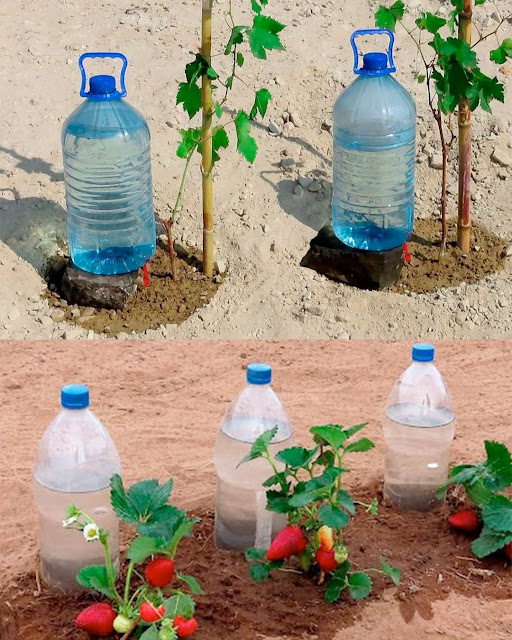Gardening enthusiasts are continually seeking innovative and sustainable solutions to nurture their plants while minimizing environmental impact and cost. In this comprehensive guide, we’ll explore two DIY methods that offer efficient and eco-friendly watering solutions for your beloved greenery. These techniques utilize everyday household items to ensure your plants receive the optimal moisture they need to thrive, all while promoting water conservation and reducing the strain on your time and energy.
Method 1: Buried Plastic Bottle for Slow-Release Watering
Materials Needed:
- A suitable plastic water bottle (2 liters)
- Writing utensil
- Tool with a sharp edge (e.g., awl or hot iron rod)
Step-by-Step Instructions:
- Prepare the Bottle: Begin by thoroughly rinsing the plastic bottle and removing any labels. Using your writing utensil, mark two lines on the bottle: one approximately 15 cm from the base and another at the neck’s 10 cm mark.
- Create Water Drainage: Using your chosen sharp tool, carefully create a small opening around seven centimeters from the bottle’s base.
- Fill the Bottle: Secure the bottle cap tightly and fill it with water until it reaches the lower marked line.
- Position the Bottle: Dig a hole near the plant and bury the bottle up to the designated line, ensuring the hole faces the plant.
- Final Steps: Once the bottle is positioned, screw on the cap tightly and cover the top with soil, leaving the neck exposed.
Advantages:
- Directs water to the plant’s root zone, minimizing waste.
- Reduces the frequency of watering, saving time and energy.
- Ideal for outdoor plants and vegetable gardens.
Method 2: Plastic Bottle with Fabric/String Wicking System
Materials Needed:
- Reusable plastic container
- Thick cotton thread or cotton cloth
- Liquid fertilizer or water
- Sharp tool for creating holes
Step-by-Step Instructions:
- Prepare the Bottle: Clean the plastic container and puncture holes in the cap.
- Thread Fabric or String: Cut a length of fabric or string long enough to reach the soil, then thread it through the cap.
- Fill and Cap the Bottle: Before replacing the cap, saturate the bottle with water or liquid fertilizer.
- Setup the Bottle: Place the bottle upside down in the soil near the plant, ensuring the fabric or string makes contact with the soil.
Advantages:
- Ensures consistent moisture distribution directly to the plant’s roots.
- Suitable for potted plants both indoors and outdoors.
- Requires minimal maintenance and is easy to monitor.
Conclusion:
In times of water scarcity and busy schedules, these DIY watering methods offer practical and sustainable solutions for nurturing your garden or potted plants. By repurposing common household items like plastic bottles and fabric, you can effectively conserve water, reduce your ecological footprint, and promote the health and vitality of your plants. Whether you’re a seasoned gardener or just starting out, embracing these eco-friendly practices will not only benefit your plants but also contribute to a greener, more sustainable future for our planet.
image source : Barbara O’Neill Lectures










